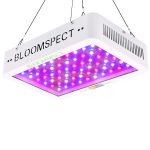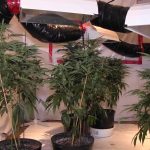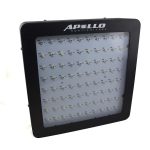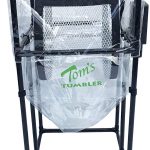The cannabis plant is at its most fragile and vulnerable state as a seedling, making the growing stage prone to several problems. If you fail to take care of your marijuana seedlings during this critical stage, you will start with unhealthy looking plants that will affect the growth and future yields.
Of course, before planting, you have to ensure that the seedlings you have are from a reputable seller to avoid buying weak seeds that will give you problems from start to finish. To be on the safe side, if you are a beginner, you should buy your seedlings from any of the reputable online seedbanks.
Seedlings start with two cotyledons, already formed inside the seeds but open up after sprouting. After the cotyledons, other cannabis leaves start growing from the middle of the cannabis seedling. The leaves continue to look more like the cannabis leaves you are familiar with, as they get older.
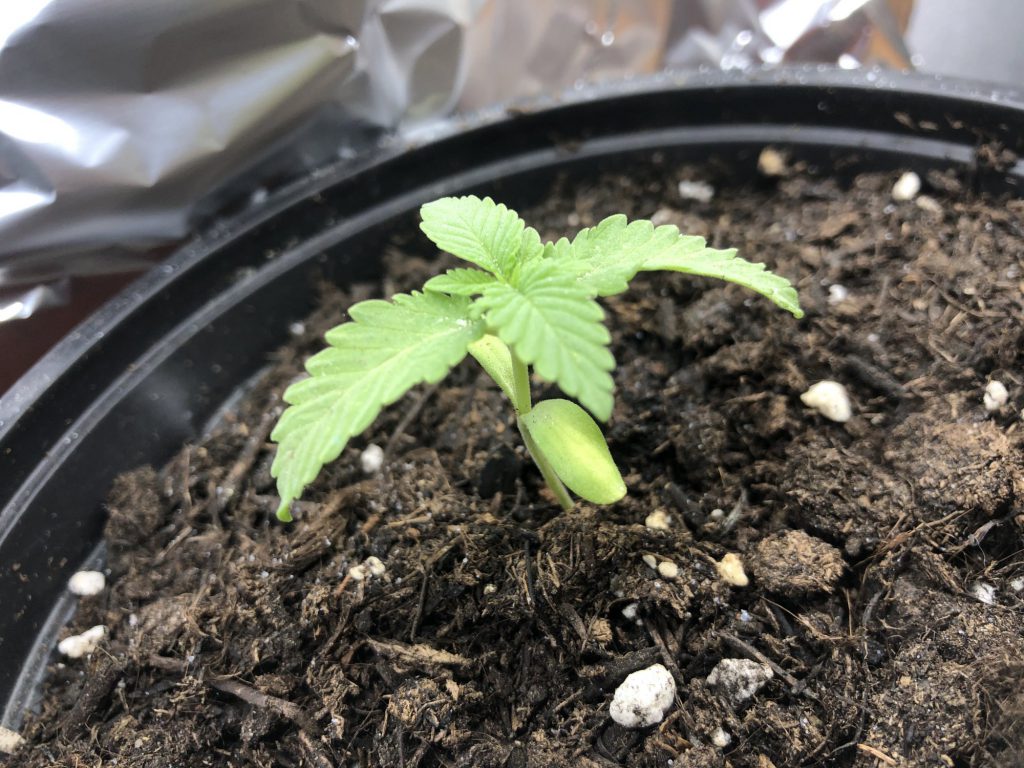
During this stage, you need to be extremely careful about how you handle the delicate plants if you want them to continue with healthy growth. The most common cannabis seeding problems that could change the healthy growth are overwatering, underwatering, light, nutrient, and temperature issues.
An experienced cannabis grower can easily avoid these issues, but for a newbie growing cannabis for the first time, this article explains the cannabis seedling problems you may encounter.
Most common cannabis seedling problems
1. Overwatering
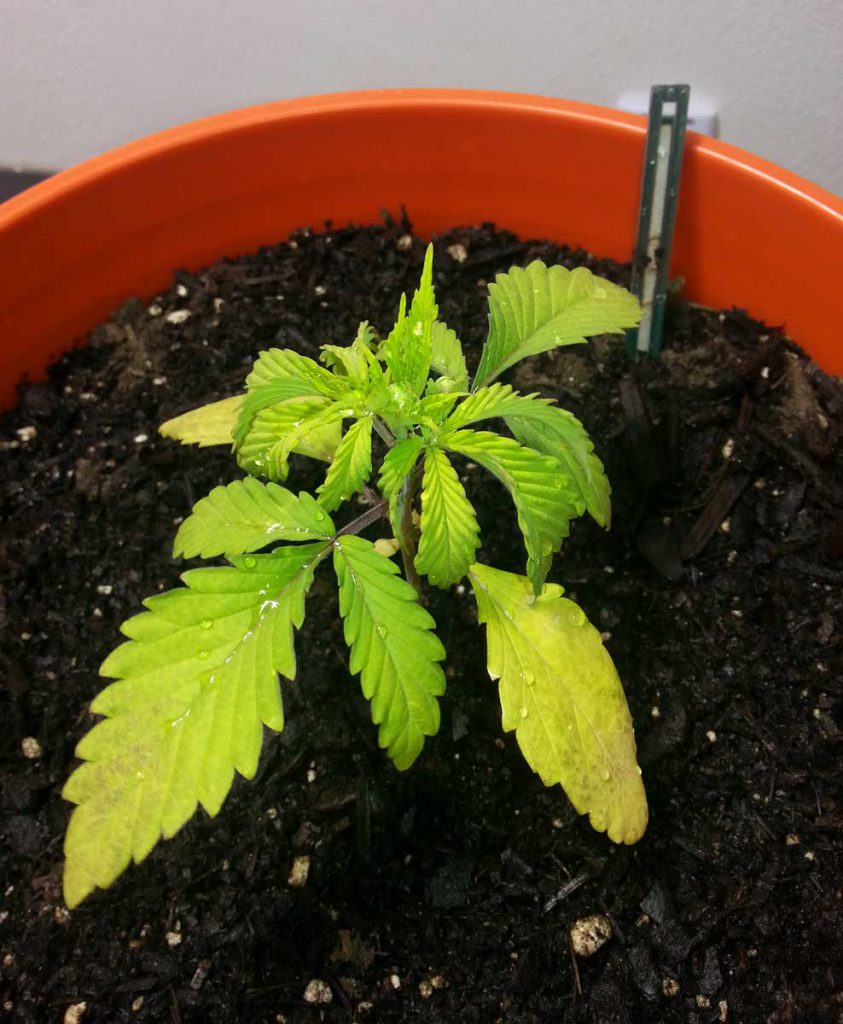
Overwatering has more to do with the lack of oxygen than it does with burdening the seedlings with too much water. The most common symptoms of overwatered plants are droopy seedlings, moist medium, and damping. The symptoms mostly show themselves in hydroponic systems where plans grow exclusively in water.
The plant roots, immersed in water, use up the available oxygen, and they remain fine as long as they get enough of it in circulation. If they use all the oxygen, they start to droop without wilting and showing all the other oxygen deprivation symptoms.
One of the leading causes of overwatering is planting the seedling in a large pot. A large pot holds more water that takes longer to dry out, which becomes a problem considering seedlings do not absorb too much water. Instead of using a large container for your seedling, you should start with a much smaller one that does not hold too much water.
Using a smaller pot helps the plants to grow faster. You can change to a larger container later after the seedlings start to display significant growth. If, by any chance, you do not have any other choice but to grow your seedling in a large pot, do not panic because you can adjust the watering methods to prevent overwatering.
The following methods will help to prevent overwatering when using a large pot:-
- Use smaller amounts of water to water the plant.
- Using a circular motion, pour the water into the pot.
- You also need to make sure that the top layer of the soil does not contain any moisture or dampness before resuming your next watering cycle.
On the other hand, using a small pot for a large seedling is also not a solution, and you will end up with the same weak plants. Using a small container leads to plants with bound roots. The plants later develop strange symptoms that include discoloration, nutrient deficiencies, and drooping. Root bound happens when roots wrap themselves outside the container without providing water with an escape.
Lack of drainage is also a huge problem as it prevents water from moving from the container to the soil freely. If you are using clay-based soil as your growing medium, you may encounter a few occasional overwatering issues. Ensure that the bottom of container you use for your seedlings has enough drainage holes. You should also make sure the drainage holes are devoid of any clogging for better drainage.
Another cause of overwatering is frequent watering of the seedling. Before adding any water to the container, you need to make sure that the soil is dry for the roots to get an adequate oxygen supply. Roots absorb oxygen in the water quickly, which is why they need to survive by having enough air pockets. One way of ensuring that the growing medium retains more oxygen is by using a potting mix such as perlite.
Another way of increasing air in the soil is by using air or smart pots that allow air in through the sides. You can also reduce overwatering by providing the seeds with less water, especially during the low and colder temperatures.
[amazon bestseller=”smart pots”]2. Underwatering
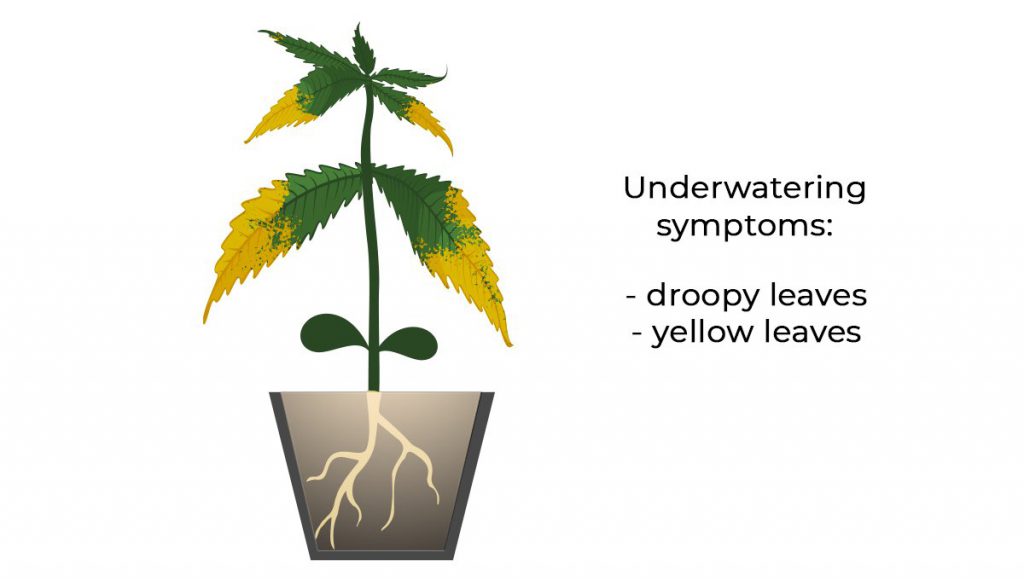
Underwatering seeds is another common problem that affects the growth of cannabis plants. Even though the problem is not as common as overwatering, underwatering also display easily visible symptoms. The symptoms include dry soil with no moisture, plant wilting, and drooping, stunted growth, twisted and discolored plants.
Underwatering happens especially with beginners that overcompensate after learning of the dangers of overwatering. Combining nutrient overdose with underwatering also causes the seedlings to turn into a dark green color, alongside all the other symptoms.
Water is an essential ingredient for plant growth, and since they lose much of it through transpiration, you need to ensure that the soil has enough moisture throughout for proper growth processes and functions.
If you allow the roots to dry out, they will eventually die, and you will have no plants to look forward to growing to maturity. Underwatering is an easy thing to fix. All you need to do is water the plants once you see the growing medium drying up or the plants wilting due to lack of water and moisture.
Water the plants regularly, even though the soil mix is hot or has many nutrients. Once the plants start adapting to frequent and enough water supply, they will come back to life fast.
3 .Nutrient Toxicity
The symptoms of too many nutrients in your seedlings include leaves that are spotted, crispy, discolored, or yellow. Other nutrient toxicity symptoms include dark leaves and tip burns. Nutrient issues come from overfeeding the seedlings with too many nutrients or too little of them.
You can also have a nutrient issue if you use the wrong nutrients. Seedlings should use correct and enough nutrients that help them to stay green at all times. One of the main nutrient toxicities is nitrogen deficiency. Plants with nitrogen deficiency turn leaves into brown and yellow colors. The leaves also go soft before folding and falling off the plant.
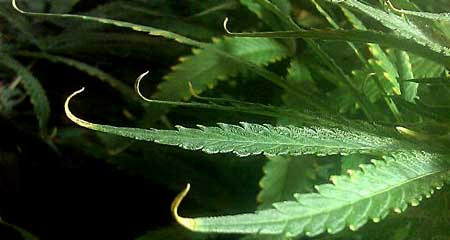
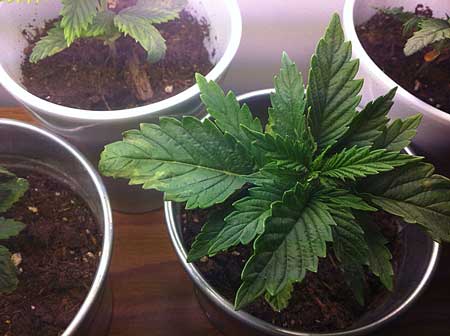
Nutrient deficiency affects older leaves at the bottom of the plant first before it starts to impact leaves on the other parts of the plant. Another major cause of nutrient toxicity is using slow-release soil. Slow-release soil causes nutrient burn to the seedling, affecting plant growth and the final yield. One example of slow-release soil is Miracle-Gro Soil.
Contrary to what some growers believe and practice, seedlings do not need many nutrients until they are three-week-old sprouts. Nutrient toxicity also develops fast, so you should be very careful about how much you feed the seedlings.
[amazon bestseller=”weed soil”]4. Lighting Issues
Too much or too little lighting is another issue that affects cannabis plants. Probably the most widely recognized lighting issue that include over the top or too minimal light, incorporates burnt out leaves, taller than normal seedlings that outgrow their size in search of light, badly crinkled leaves, and superfluous stem spaces between stem nodes. Plants get tall due to lack of enough light while they look burnt or fried when they have too little light.
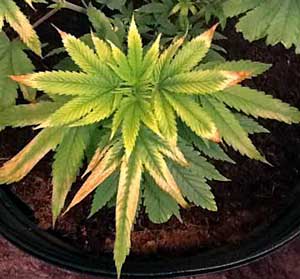
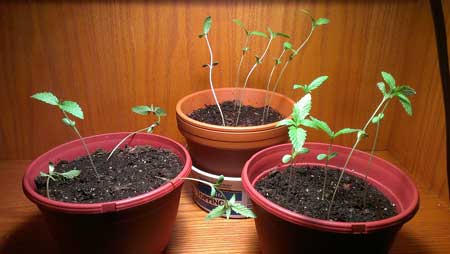
If you are growing your marijuana indoors, you can fix the lighting problem by moving the lights further or nearer your plants. If you are growing your weed outdoors, you can fix the problem by covering the plants when it gets extremely hot.
Also, ensure that all your plants, whether you are growing indoors or outdoors, get enough light exposure. During the seedling stage, cannabis plants need little lighting, but you should adjust as the plants grow.
[amazon bestseller=”best led grow lights”]5. High Temperatures
Another common cannabis seedling problem is high temperature. High temperature leads to leaves looking like canoes and tacos displayed by curling edges. Besides curling, the leaves also show spots and wilt. The best temperature levels to maintain in your grow room if you want your plants to grow healthy is between 68 and 78 degrees Fahrenheit.
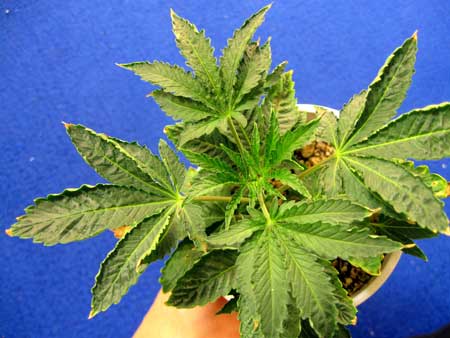
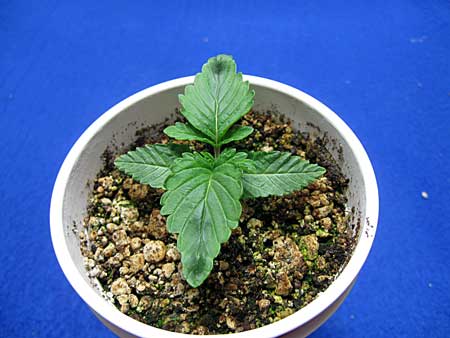
To ensure that the temperature stays at the required levels, you should monitor it closely and use a thermometer to help you keep it in check. Another way of maintaining desirable temperature levels in the grow room is by ensuring that the grow lights are not too close to the plants. Maintain the required light distance to avoid overheating and burning plant canopies.
Read next: Best Temperature and Humidity Controllers
Desirable Traits of Cannabis Seedlings
If you want healthy looking cannabis seeds, you should look out for the following traits.
Healthy seedlings, leaves, and stalks should bear a green color. If you notice that the seedlings have a purple color while the stems and stalks are a grayish color, it is an indication that the development of the roots is poor. The color changes are also an indication that the roots cannot process nutrients adequately.
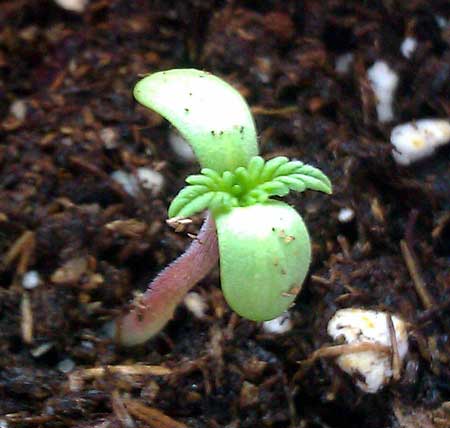
You can tell the cannabis plant is healthy if the leaves are upright and parallel to the soil. Improperly formed leaves will show a trait such as discoloration, droop down, and curls. The defects are an indication that the seedling is not handling the same conditions other seedlings are thriving in well enough.
Unless you are growing your cannabis seedlings in aeroponics or deep-water culture (DWC), it is not always possible to monitor your plant’s root development easily throughout their growing cycle. However, you can tell if they are healthy if they display the appropriate height depending on their age, and the leaves have the appropriate size and set well without curling.
Visibility of the positive traits expected of the cannabis plants such as density, good health, and branching, is mostly possible during transplantation and the harvesting period.
If you notice seedlings that do not keep up with the rest in terms of healthy leaf development, height gain, robustness, and growth rate, you should dispose of them because they are defective. In some cases, you may decide to throw caution to the wind and keep the undesirable or defective seedlings in the hope that they might stay alive and germinate into healthy plants.
It is a tough decision to make, but it is not unusual for defective seedlings to turn around and surprise you with the deliverance of healthy plants and highly potent yields. However, you also have to prepare yourself if you decide to take that road because many of the defective seedlings may grow into plants. However, you have to contend with ending up with unhealthy plants prone to several diseases, provide little yields, and need lots of attention throughout their growing cycle.
Wrapping It Up
Growing cannabis is not a walk in the park, especially for those doing it for the first time. However, enough knowledge about what to expect during the growing cycle and enough practice makes cannabis growing both fun and fulfilling. Using seedlings to start your growing journey needs, the utmost care because they are delicate and susceptible to many ills.
Before putting them in the ground, the first step is to ensure that your seedlings are from a reliable and trusted seller. Buying from a reputable seller assures you of strong, resilient, and easily adaptable seeds that will grow to healthy plants and high yields. The next step is caring for the seedlings.
Do not feed them with too much water or give them too little that will end up killing them. Ensure that the lighting system you have in your grow space provides full-spectrum light to cover all the seedlings.
Monitor the temperatures carefully to prevent the crops from burning out and get a dehumidifier if the place is too humid. If you have seedlings that do not measure up, get rid of them, and leave only the strongest for better yields and fewer problems. The whole exercise may seem too challenging, but it is worth the effort.
[amazon bestseller=”Temperature and Humidity Controllers”]
